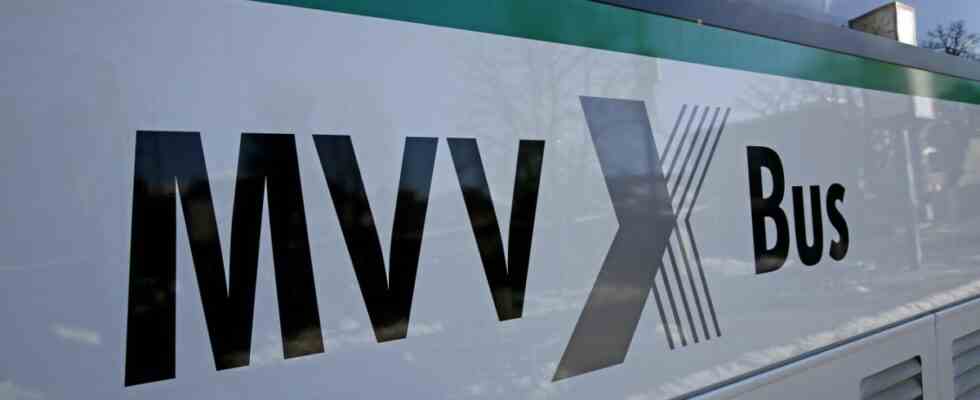In recent years, there have always been innovative proposals in the district of Munich to speed up the turnaround in traffic and to get more people to switch to public transport. Trams should connect Unterschleißheim, Garching and Ismaning, gondolas should hover over the Hachinger and Isar valleys, and a magnetic levitation train was also discussed. So far none of this has become a reality. The measure of all things in local public transport in the district of Munich is still the S-Bahn and the bus – and there are some improvements for both of the timetable changes this Sunday, December 11th. At the same time, tickets are becoming almost seven percent more expensive on average. An overview of innovations.
In future, the S 7 will run every 20 minutes to Aying.
(Photo: Claus Schunk)
Train
From Sunday onwards, the Munich S-Bahn will offer a continuous 20-minute cycle almost everywhere on the outer branches of the network. The Bayerische Eisenbahngesellschaft (BEG), as the operator of the Munich S-Bahn, is thus keeping a promise to commuters. According to the BEG, this increase in performance corresponds to an additional 775,000 train kilometers per year. With this increase, there are only a few exceptions in the network at 20-minute intervals – one of them, however, relates to a route that has been a nuisance in the Munich district for decades: the east branch of the S 7. From Sunday on, the S-Bahn will run between Wolfratshausen and Aying every 20 minutes from Monday to Friday from 5 a.m. to 11 p.m., thus closing the previously existing gap between Höhenkirchen-Siegertsbrunn and the Aying stop. However, the additional trains, which always depart southbound from Höhenkirchen-Siegertsbrunn on the hour, neither stop in Dürrnhaar nor in Peiß. And between Aying and the final stop at Kreuzstrasse, only two S 7 trains run every hour.
The program on the airport line S 8 will also be expanded. With the timetable change, there will be a continuous 20-minute interval from 4 a.m. to midnight. On the S 1 line via Unterschleißheim in the direction of the airport and Freising, the frequency will also be increased, where an S-Bahn runs every 20 minutes from 5 a.m. to 11 p.m., as well as on the S 2 line via Feldkirchen and Heimstetten to Erding.
express buses
The strength of the express buses lies on the one hand, as the name suggests, in their speed, but even more in their function as tangential feeders that complement the S-Bahn network, which is centered on the state capital of Munich. The connection now stretches from the Dachau S-Bahn station to the underground stations Garching-Hochbrück and Garching-Forschungszentrum (X 201), from Unterschleißheim via Garching, Ismaning, Aschheim and Feldkirchen to Haar (X 202). From the north-eastern district, the route goes from Heimstetten via Haar, Putzbrunn, Hohenbrunn and Taufkirchen to Oberhaching – from there, instead of the Furth S-Bahn station, the Deisenhofen S-Bahn station with the new school campus will be served (X 203). And the X 320 continues from Oberhaching to Wolfratshausen.
With the reopening of the Mittenheim Bridge, the only crossing-free crossing of the railway line in Oberschleißheim, the express bus X 202 in particular will be accelerated in the northern district and will in future also be able to drive to the Oberschleißheim S-Bahn station. From Garching, the district of Freising will also be better connected in future with the X 660 express bus, where buses will also run from the research center in the direction of Weihenstephan on Saturdays every 60 minutes. In the eastern district, the X 203 will also connect the Keferloh district of Grasbrunn and Ammerthalstraße in Heimstetten.
The X 200 express bus has also emerged as a successful model, which connects the commercial area on Lilienthalstraße in Taufkirchen from Munich Ostbahnhof via Karl-Preis-Platz and thus also the Ludwig-Bölkow-Campus in Ottobrunn and indirectly the Brunnthal-Nord commercial area. During peak traffic times in the early morning and evening, the bus, which drives via the A8, even runs every five minutes.
There are also changes to numerous regional bus connections in the Munich district with the timetable change. All information is available on the website of the Munich Transport and Tariff Association (www.mvv-muenchen.de) in the timetable information area.

